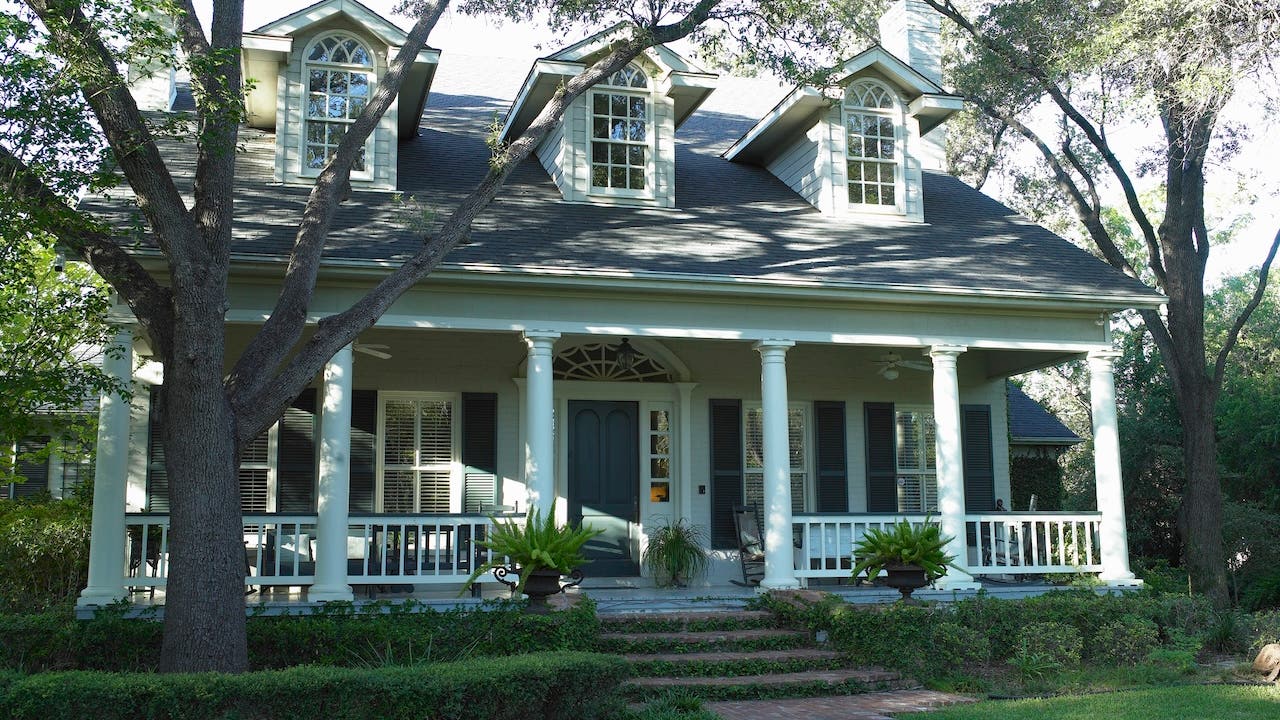Cost to buy a house in Texas

The Bankrate promise
At Bankrate we strive to help you make smarter financial decisions. While we adhere to strict , this post may contain references to products from our partners. Here's an explanation for .
Thinking of buying a home in the Lone Star State? You’re not alone. The state is attracting plenty of new residents these days: In fact, it topped the list of moving giant U-Haul’s annual Growth Index in both 2021 and 2022 as the biggest destination for movers.
But before you jump to buy a new Texas home, it’s important to understand the many costs you’ll incur beyond just the price of the house. Read on to learn all about what it costs to buy a house in Texas.
How much does it cost to buy a house?
Buying a house requires shelling out for a number of related expenses, including your down payment, closing costs and moving costs. But the main expense, of course, is the price tag of the actual house. The median home price in Texas as of October 2023 was $342,400, according to Redfin data.
However, prices vary greatly depending on which part of the Texas housing market you’re looking in. For instance, the median price in Lubbock was just $245,000, while in buzzy Austin, it was a much higher $545,000.
How do these numbers translate into a monthly budget? Bankrate’s mortgage calculator can help you crunch the numbers: Let’s say you take out a 30-year mortgage for a median-priced $342,400 Texas home, with a 20 percent down payment. Assuming a 7.5 percent interest rate, your monthly principal and interest payments would come to $2,438.
Down payment
Conventional wisdom recommends that borrowers put down 20 percent on a home purchase. That figure may seem daunting, and with good reason — 20 percent of $342,400 is more than $68,000, a hefty amount to have to pay all at once.
But 20 percent is not mandatory, and there are plenty of loan options available if that kind of outlay is out of reach. In fact, if you qualify, a conventional loan can be had with as little as 3 percent down. However, if you put down less than 20 percent you’ll probably need to pay an additional monthly fee for private mortgage insurance, which will add to your overall homeownership costs.
Luckily, many down payment assistance programs are available to help borrowers afford the costs of buying a home. If you meet their eligibility criteria, you may be eligible for forgivable and low-interest loans or grants. And Texas has special assistance programs for first-time homebuyers, as well.
Closing costs
Closing costs in Texas typically add up to about 1.5 percent of the home’s sale price, according to data from CoreLogic’s ClosingCorp. For a $342,400 home, that comes to an additional $5,136.
However, buyers are not responsible for the full amount of closing costs. Most of what you’re on the hook for as a buyer consists of mortgage-related fees from the lender, as well as the cost of a home appraisal, which assesses the value of the house, and a home inspection, which checks for any safety issues or structural deficiencies. Be sure to have additional cash reserves remaining after covering these expenses, in case of emergencies or unexpected issues.
Cost to move
Remember that, anytime you buy a house, you’ll need to factor in the cost of moving into it. If you already live in Texas and your move is relatively local, hiring professional movers might cost a couple thousand dollars. But it’s a big state, and if you’re moving from one end of it to the other, or an even longer-distance trek from out-of-state, the price could run several thousand more. You may need to purchase more or different furniture as well, so factor that potential cost into your budget.
Homeownership costs
Once you become a homeowner, keep in mind that you’re responsible for a wide range of ongoing expenses besides just your monthly mortgage payments. These include:
- Property tax costs vary widely depending on where you live. Texas has no state property tax, but local governments within the state impose their own property taxes individually.
- Homeowners insurance will be required by your lender, and the cost of the premiums will depend on various factors, including the home’s size and location.
- Maintenance, upkeep and general repairs
- Utilities
-
HOA fees, if the home you purchase is part of a homeowners association. These vary based on the services and amenities provided.
Reducing costs to buy a house
By now you may be looking for ways to reduce the costs associated with buying a house. Here are some options to consider:
- Ask for seller concessions: You may be able to negotiate with the seller to have them cover a portion of your closing costs, as well as other things like the cost of a needed repair. Ask your real estate agent for help with this.
- Buy a smaller house: Everything is bigger in Texas, but how much square footage do you actually need? A smaller house is likely to be less expensive than a bigger one, which reduces both your upfront and ongoing costs. And keep in mind that condos and townhouses are a great way to achieve homeownership at a lower price point than single-family homes.
- Rethink your ideal location: With the rise of remote working, many people don’t need to live in a big-city location for job reasons anymore. Expanding your search area outside of the hot or buzzy areas can get you a better home at a cheaper price.
- Wait until mortgage rates come down: Today’s steep mortgage rates reduce your buying power and add to your housing costs. If you can hold out in the short term, waiting for rates to cool down a bit, it could save you plenty in the long run.
Next steps
The best way to find your ideal Texas home is to team up with an experienced real estate agent who can guide you through your homebuying journey. An agent who knows your Texas area well can help you find the right home at a price that works for you.
FAQs
-
The answer depends a lot on the cost of the house and the type of financing you secure. The median price of a Texas home, according to Redfin, is $342,400. A 20 percent down payment on that comes to more than $68,000, but many mortgages can be had for much less than 20 percent. For example, if you qualify for a 3 percent down payment on a conventional loan, that comes to a much less daunting $10,272. In addition to a down payment, you’ll also need enough to cover closing costs and moving expenses.
-
As in any state, both buyers and sellers pay closing costs in Texas. Sellers are typically responsible for the biggest cost, which is the real estate agents’ commissions, while buyers are responsible for various mortgage- and property-related costs, like lender fees and the cost of a home inspection and appraisal.
-
Actually, homes in Texas are comparatively affordable. The median price of a Texas home in October 2023 was $342,400, according to Redfin. That’s about $50K lower than the national median home price during the same month, which was $391,800.
Related Articles



